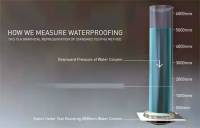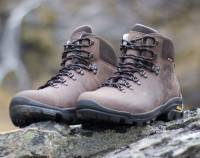This is an old revision of the document!
Table of Contents
Sota Personal Equipment:
SOTA (Summits on the Air), POTA (Parks on the Air) and HEMA (Humps Excluding Marilyns Award) are radio but in the Great Outdoors as they say. See below information regarding the person equipment not radio related to have a fun but safe journey into the great outdoors.
Boots
There are many different types of boots on the market they can range in price for £40.00 all the way to the hundreds of pounds. To enjoy the great outdoors you don’t need the super high end unless you are going up something like K2 (which in sota in the uk is very unlikely to get anything like that), however bear in mind that if you are on the hills everyday you might need to invest more money to get a longer lasting boots. For the every couple of weekend walkers the low to mid range price around £100.00 will be fine.
Sizing boots is more important than people think, don't get the size you normally are as most people are a size bigger than they normally are. There are two reasons for this one: you will be wearing bigger socks so they take up more room and you don’t want your feet rubbing. Secondly when you walk for long hours and distances your feet expand and this creates problems if your boots are too small your feet will curl up and be damaged. Lastly when you feel for a boots fit easy tip is that the boots should be secure round the ankle and have wiggle room in the toes.
Taking care of boots this is very important to keep boots waterproof. However please bear in mind that boots are not designed for standing water they are designed to keep water out running over them. So don’t stand in water for long periods of time as they will leak, if you need that wellies are the way to go however they are not correct shoes for going up hills as you can break an ankle with them. The best and cheapest advice to keep boots waterproof is to keep them clean. The cleaner you keep them the longer the waterproofing on the boots from the manufacturer will last. After this has been worn away (for an average walker this is about a year). Then you should apply a reproofer, but if the boots are still waterproof do not apply a reproofer as the new layer will attack the old layer.
Socks
There are many sock brands very similar to each other. However there are different types of socks you can wear out and about. First type is a general walking sock this is usually a medium high sock which is sung round the foot but with a bit more padding in the ankle and toe area. The second type is a liner sock this is a thin sock which is used in very hot summers and as sock to help with blistering. Lastly there is an anti blister sock this is like a walking sock however instead of using a liner sock it has a mesh on the inside this is what makes them anti blister as the mesh and sock rub together instead of your feet and the sock. This same effect can be achieved by putting a liner sock under a walking sock. Lastly please change into a new pair of socks when driving back from the hills. This will allow your feet to breath and recover from a long walk sooner.
Base Layers
There are a couple types of base layers. The first being thermal base layers. This is normally thin wool which will go between your skin and t-shirt and you can also get trousers as well. This type is normally for colder climates and do bear this in mind before buying these as depending what season you walk you might not need them at all. This second type of base layer is normally thin fleece, these are also normally called micro fleece. These are normally between t-shirt and your main fleece or between your waterproof jacket depending on weather. These items are very weather dependent however be warned that you might want to take them in a backpack just in case due to the fact the weather at height can be very different to the car park and you may need them. Please check the mountain forecast to help with this decision.
Fleece
Fleece are an important part of any day out as they provide multi purposes when you have them on. One of them is to be a thick outer layer when it is not raining. This helps by reducing the effect of wind chill and gives you an air layer between the fleece and under layer which keeps you warm. However when raining in cold temperatures, the fleece becomes an inside layer which means you might not need the thickest but it will create air layers between the waterproof and the fleece and also between the fleece and under layer. So when going up the hills bear in mind that the temperature is normally lower than at the car park and layers will be needed and can be sorted in a rucksack to put on and take off as needed.
Waterproof Jacket and Trousers
Waterproofs are needed no matter where you go out as it will rain at some point. However when buying waterproofs most people look at the brand and the jargon that goes with them for example (iso-tex) what does this mean. Well all that is the brand of membrane used and doesn’t denote how waterproof something is. When looking at a waterproof jacket or trouser the import thing to look at is the numbers after the jargon. These range from 3000 to 20000. This is an industrial test carried out on all waterproof with a rating. This is done by using a tube with the fabric under it for an hour with the mm amount of water to create head pressure on the fabric and as long as the water doesn’t go through for an hour, it will get it waterproof rating. The lowest rating that people should consider for any outdoor hill walking for any length of time is 5000mm but if you are doing this multiple times a year weekend after weekend, then you should go higher to 10000 - 20000 as they will last better in the long run. So when buy don’t look at the brand check the rating to see what it will be capable of.
 Looking after the jacket is similar to boots as they should last a year at that rating depending on how much you use it. Please don’t reproof until the jacket starts not working as intended as you don’t want to attack the manufactured waterproof layer. Also when washing a jacket please buy cleaner design for washing waterproofs as normal washing clean will strip the waterproof coating out of the membranes.
Looking after the jacket is similar to boots as they should last a year at that rating depending on how much you use it. Please don’t reproof until the jacket starts not working as intended as you don’t want to attack the manufactured waterproof layer. Also when washing a jacket please buy cleaner design for washing waterproofs as normal washing clean will strip the waterproof coating out of the membranes.
Hat/Gloves
Hat and gloves are needed no matter what, in the outdoors. As they help protect exposed areas of the body which can be damaged over time from cold weather. In the case of hands could get frostbite in the high hills in Scotland and around the world. So you should have a pair just in case even in summer as the weather on top of hills can change at a moment's notice. There are two types of hats you need depending on weather one being a beanie type which will be for winter, the second being a sun hat for summer as the heat on your head can be damaging just as much as the cold in winter. Gloves for most of the year woolen gloves will be fine to keep you warm but when it come to deep winter when snow comes you need to make sure you have snow gloves this is due to woollen gloves get wet and they will not longer provide the protection you need as the glove part that touches your hands needs to be dry to effectively protect your hands.

